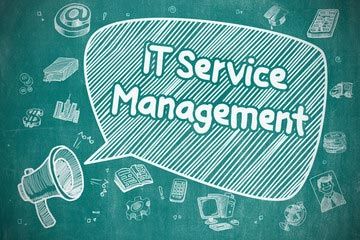
How to Prepare for the Future of ITSM?
Where some businesses are trying and testing new ways to stay successful, others are preparing for the future of ITSM by integrating the latest version of ITIL framework—ITIL v3.
Before we share with you the ways you too can ensure your readiness for the future of ITSM, let us first give you a quick overview of ITSM and ITIL.
ITSM also known as Information Technology Service Management enables businesses to build strong structure around the IT services lifecycle— creating, deploying, delivering, improving, and retiring IT services. Simply stated, it helps businesses to manage IT to serve their organizational and customer needs. It helps define and execute the what, when, who and how aspect of any given process—maximizing the overall value of the targeted process or service.
Though there are several ways to implement and integrate ITSM in your business landscape, the popular and preferred one is ITIL. Its third and latest version is ITIL v3. ITIL is basically a collection of the best practices used to manage IT. It comprises of 26 (twenty-six) ITSM processes but they can be spilt into 5 categories. However, the 3 most popular categories that businesses focus on are:
- Incident management— 100 percent adoption rate
- Change management—75 percent
- Problem management—60 percent
It’s important to prepare for the future of ITSM now than later because it’s possibly the best way you can survive, thrive and grow. ITSM increases cost-efficiency, effectiveness and speed of IT services. Besides it, reduces and prevents IT incidents thereby ensuring minimal or zero interruption in your quality customer services.
Tips to Prepare for ITSM — The Critical Business Transformation
Identify Your Core Team
To prepare for ITSM according to ITIL framework, a knowledgeable project leader and a team of competent process owners for different processes is crucial for successful transformation. So, the first thing that you need to do is define your core team by optimizing IT staffing resources. Deploy the right people at the right positions where they can leverage their skill-set appropriately. Your core team will serve as the drivers for integrating and implementing ITIL. Therefore, it’s important to identify the core team while chalking-out the ITIL preparation and implementation phases.
ITSM Training
ITSM training is crucial to ensure that the core team has and is abreast with the skills, and knowledge to carry out the assigned tasks with precision. ITIL foundation certification along with specialized training is essential for to prepare for ITSM integration. Specific modules, masters and expert training are available.
This training is essential for ITSM professional as they will need to take a holistic view of services offered by the organization so that they can understand new and potential threats to their business, and then take effective measures accordingly. Simply put, training programs like ITIL v3 certification will provide ITSM practitioners to demonstrate a visionary and proactive approach across enterprise— much needed to drive positive organizational change.
Furthermore, these certifications will also help ITSM professionals to tap opportunities by demonstrating knowledge and capabilities that go beyond the traditional IT functions. Also, organizations will need tailored approach for different business functions to ensure successful integration and compliance with the best practices of ITIL. And this will require ITSM professionals to improve their understanding, expand knowledge and adopt new skills like critical thinking, negotiation, relationship development and OCM (organizational change management). All this will help them manage services, and filter new innovations into work practices thereby increasing the value of services delivered to customers.
If an organization follows a holistic approach, it can easily elevate information technology service management to a strategic level. And by understanding how to integrate services to meet customer needs ITSM professionals can increase the value that they deliver to business too—driving more revenues and profits.
This can be backed by a survey published by BMC that showed that 42% of the IT executives stated that they experienced big cost savings in their business processes after the implementation of ITSM.
Focus on Organizational Restructuring by Synchronizing Operations Efficiently and Effectively
Automate laborious and repetitive tasks by understanding and testing AI technologies for IT support. AI technologies are significantly helping customer support of several business-to-consumer (B2C) companies through integration with service desks.
According to the research conducted by EMA (Enterprise Management Associates), ITSM is becoming an innovation hub and that 91% of ITSM respondents viewed service desk as the top and primary ITSM investment.
ITSM service desk gives leaders & managers better oversight of their team activities, while the core team is able to handle and resolve any issue that may occur or has occurred actively as ITSM streamlines them. For example service desk’s ticketing system is the single-point-of-contact for the end user for reporting their issues that may affect their job related daily activities. Now incident management comes into action by providing speedy recovery from service disruption. On the other hand, the problem management team performs an RCA (Root Cause Analysis) to find a reliable and permanent solution to avoid that incident from recurring while the change management team evaluates and plans for the change but with minimum risk and impact to the existing ecosystem.
All these operations are carried to avoid chaos within the organization, and ensure seamless service delivery that aligns with the company’s IT and business vision.
